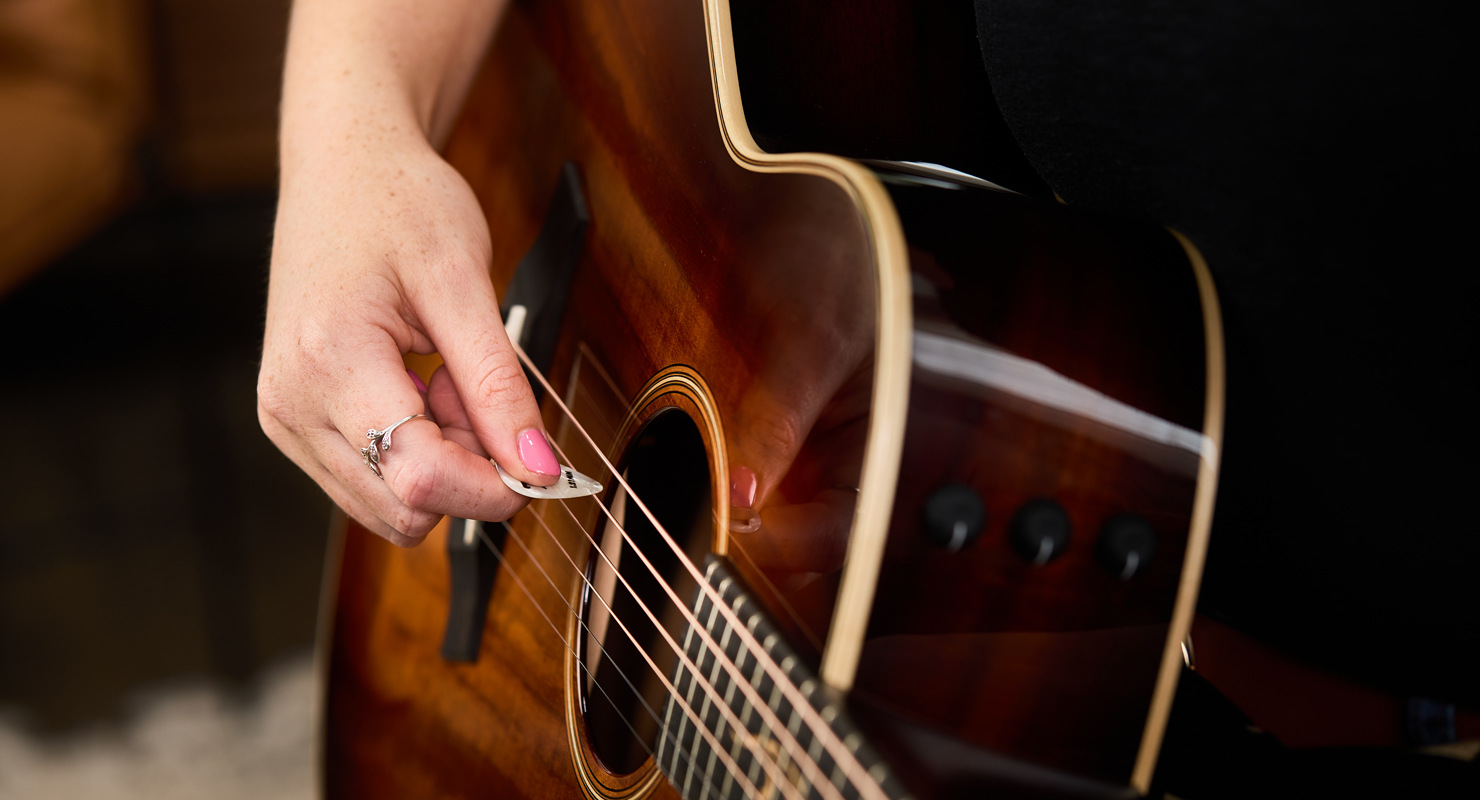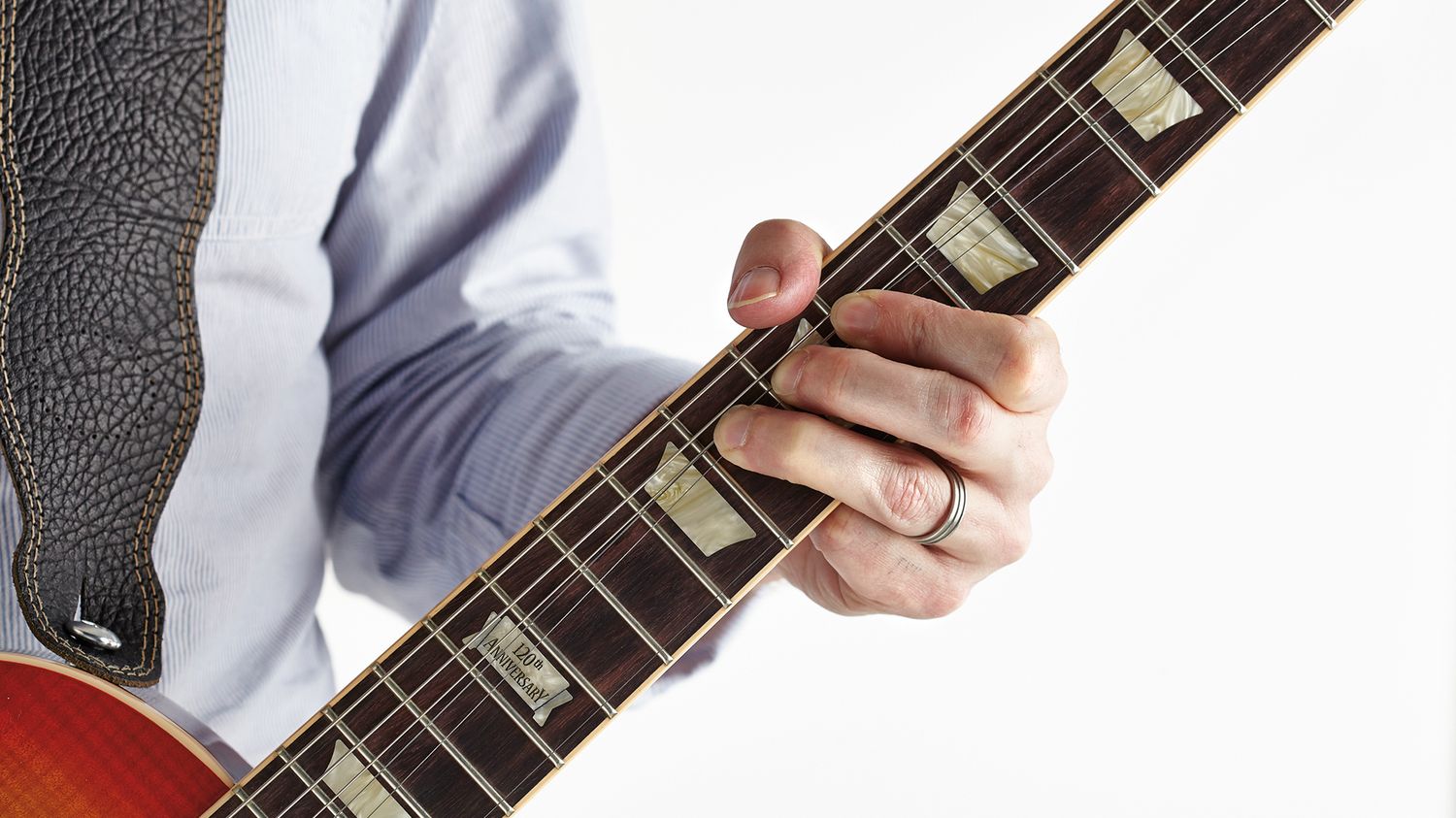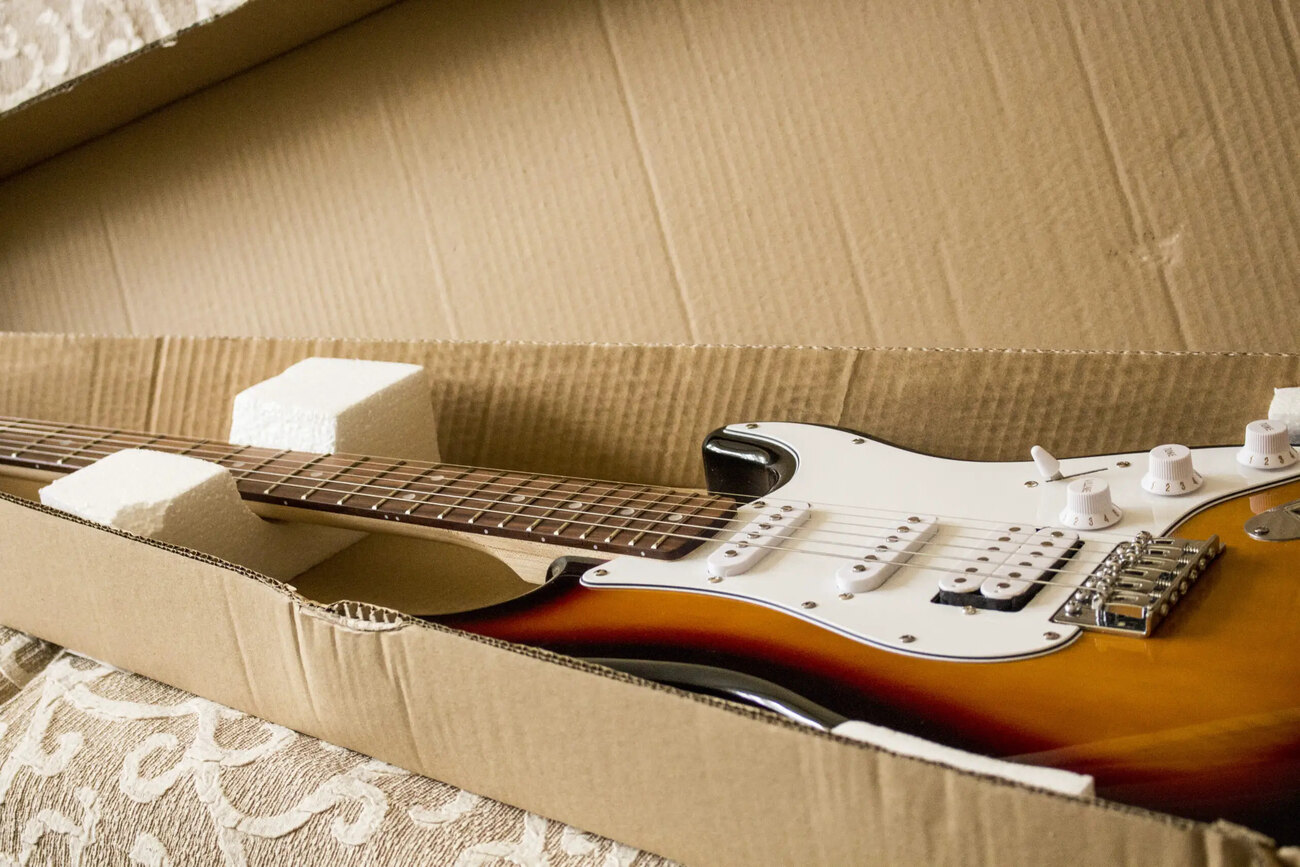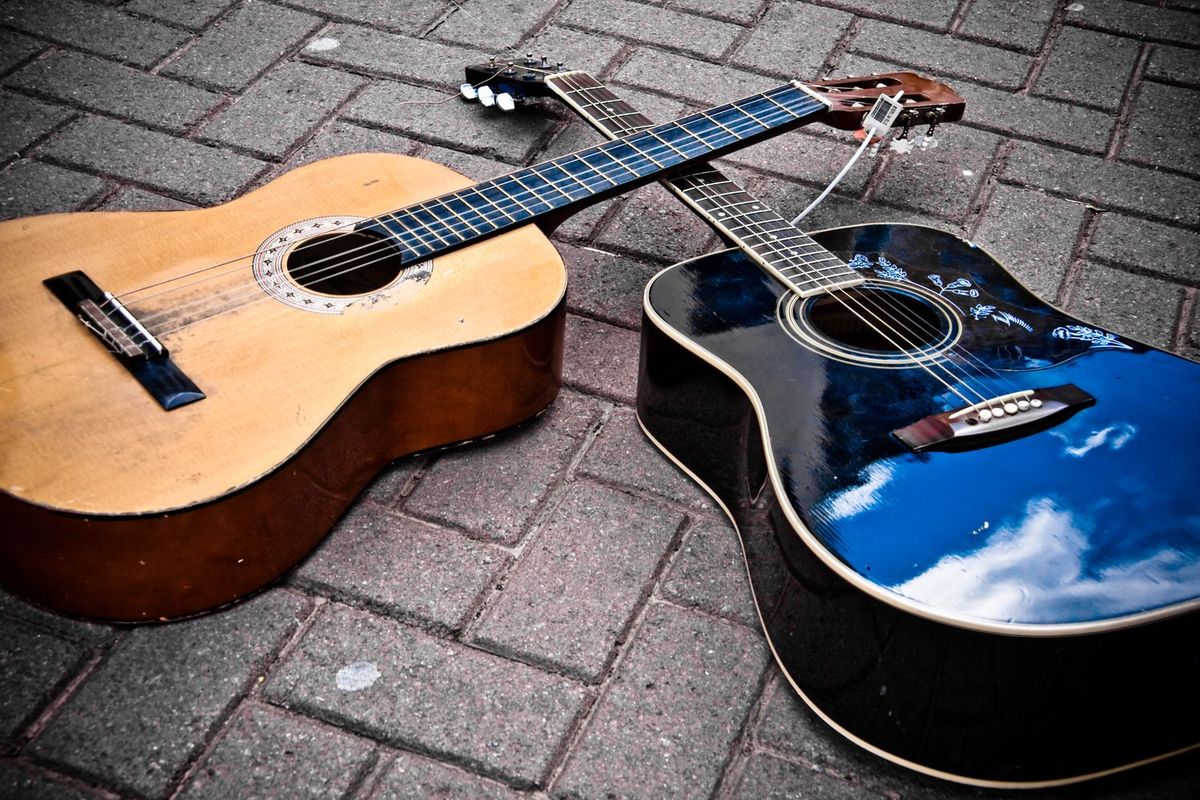Home>Instruments>Guitar>How To Store A Guitar In A Case
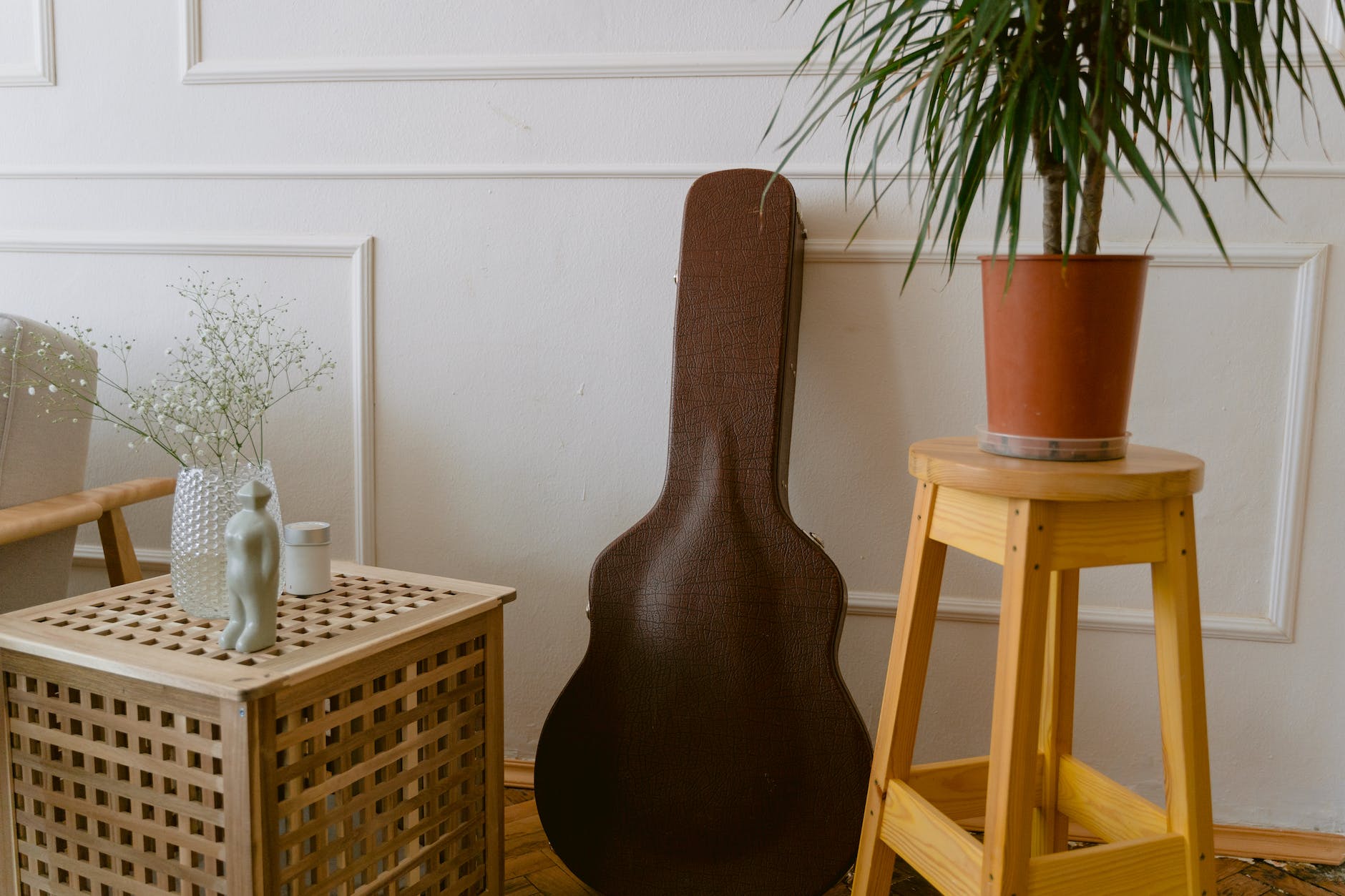

Guitar
How To Store A Guitar In A Case
Modified: February 15, 2024
Learn the best way to store your guitar in a case to protect it from damage and maintain its quality. Find tips and techniques for proper guitar storage.
(Many of the links in this article redirect to a specific reviewed product. Your purchase of these products through affiliate links helps to generate commission for AudioLover.com, at no extra cost. Learn more)
Table of Contents
Introduction
Storing your guitar in a case is essential for preserving its condition and protecting it from environmental factors that can cause damage. Whether you're a seasoned guitarist or a beginner, proper storage is crucial for maintaining the instrument's playability and appearance. In this comprehensive guide, we'll explore the necessary steps to store your guitar in a case effectively.
A guitar is not just a musical instrument; it's a cherished possession for many musicians. Whether it's an acoustic, electric, or classical guitar, each instrument requires proper care and maintenance to ensure its longevity. By storing your guitar in a case, you shield it from dust, moisture, temperature fluctuations, and physical impact, all of which can harm its delicate components.
This guide will cover everything you need to know about storing your guitar in a case, including selecting the right case for your instrument, preparing your guitar for storage, placing it in the case, and additional tips to safeguard it effectively. By following these guidelines, you can ensure that your guitar remains in optimal condition, ready to produce beautiful music whenever you decide to play.
Storing your guitar in a case is not just about protection; it's also about preserving the instrument's value and sentimental significance. Whether you're a professional musician or an avid hobbyist, your guitar deserves the best care possible. With the information provided in this guide, you can embark on a journey to safeguard your beloved instrument and extend its lifespan for years to come. Let's delve into the specifics of storing your guitar in a case and ensure that it remains a source of joy and inspiration for you.
Choosing the Right Case for Your Guitar
When it comes to storing your guitar, selecting the right case is paramount. The market offers a variety of cases designed to accommodate different types of guitars, each with unique features and levels of protection. Here’s a detailed look at the factors to consider when choosing a case for your guitar:
- Instrument Type: The first step in selecting a case is identifying the type of guitar you own. Acoustic, electric, and classical guitars each have specific case designs tailored to their shape and dimensions. Ensure that the case you choose is compatible with your instrument to provide a snug and secure fit.
- Material: Guitar cases are commonly constructed from hardshell plastic, wood, or soft padded materials. Hardshell cases offer superior protection against impact and are ideal for frequent travel, while soft padded cases are lightweight and convenient for short-distance transport. Consider your usage patterns and the level of protection your guitar requires when deciding on the case material.
- Interior Padding: The interior of the case should feature ample padding to cushion the guitar and protect it from shocks and vibrations. Look for cases with plush lining and neck support to prevent the instrument from shifting during storage or transport.
- Storage Compartments: Cases with additional storage compartments are beneficial for keeping accessories such as picks, strings, and tuners organized and readily accessible. These compartments help you maintain all your guitar essentials in one place, minimizing the risk of misplacement.
- Handles and Straps: Consider the convenience of carrying the case. Look for ergonomically designed handles and adjustable straps that provide comfort and ease of transport, especially if you anticipate carrying your guitar over long distances.
By carefully evaluating these factors, you can choose a case that not only fits your guitar perfectly but also offers the necessary protection and convenience for your specific needs. Investing in a high-quality case tailored to your instrument will go a long way in safeguarding your guitar from potential harm and ensuring its longevity.
Preparing Your Guitar for Storage
Before placing your guitar in its case for an extended period, it’s crucial to prepare the instrument to minimize the impact of environmental changes and ensure its well-being. Follow these steps to prepare your guitar for storage:
- Cleaning: Thoroughly clean the guitar to remove any accumulated dust, fingerprints, and residues. Use a soft, lint-free cloth to gently wipe the body, neck, and headstock. For metal hardware and strings, consider using a suitable cleaner to prevent corrosion and maintain their condition.
- String Loosening: To alleviate tension on the neck and prevent warping, gradually loosen the guitar strings. However, avoid completely detuning the strings, as this can lead to excessive slack and potential damage to the instrument’s structure.
- Humidity Control: If you live in an area with fluctuating humidity levels, consider using a guitar humidifier or dehumidifier to maintain stable moisture conditions within the case. Proper humidity control safeguards the guitar against warping, cracking, and other moisture-related issues.
- Adjustable Components: Check and, if necessary, adjust the truss rod, bridge, and saddle to ensure that they are appropriately set for storage. Consult the guitar’s manual or seek professional guidance if you’re unsure about making these adjustments.
- Protective Coating: Apply a light coat of guitar polish or wax to the instrument’s body to provide an additional layer of protection against moisture and environmental elements. Be cautious not to use products that contain silicone, as they can have adverse effects on the guitar’s finish.
By meticulously preparing your guitar for storage, you can mitigate the potential risks associated with prolonged confinement in a case. These preparatory measures serve to safeguard the instrument’s structural integrity, playability, and aesthetics, ensuring that it remains in optimal condition until you’re ready to play it again.
Placing Your Guitar in the Case
Properly positioning your guitar within its case is crucial to ensure that it remains secure and protected during storage. Follow these steps to safely place your guitar in its case:
- Positioning: Place the case on a stable, flat surface and open it carefully to avoid sudden movements that could potentially damage the guitar. Ensure that the interior of the case is clean and free from any debris that may scratch the instrument’s surface.
- Neck Support: Gently cradle the neck of the guitar with one hand while using the other hand to support the body as you carefully lower it into the case. The headstock should be positioned in the designated compartment, providing stability and preventing excessive pressure on the neck.
- Securing Straps: If the case is equipped with securing straps or fasteners, use them to hold the guitar in place and prevent it from shifting during transport or handling. Ensure that the straps are snug but not overly tight to avoid putting undue pressure on the instrument.
- Accessory Placement: If the case features additional compartments, place your guitar accessories, such as picks, spare strings, and a tuner, in their respective slots. This helps keep everything organized and prevents loose items from coming into contact with the guitar, potentially causing scratches or damage.
- Closing the Case: Carefully close the case, ensuring that the latches or zippers are securely fastened. Take a moment to verify that the guitar is properly positioned and that no part of the instrument is at risk of being pinched or compressed when the case is closed.
By following these steps, you can confidently store your guitar in its case, knowing that it is well-protected and positioned for safekeeping. Proper placement within the case minimizes the risk of damage and ensures that your guitar remains in optimal condition until it’s time to bring it out and play once again.
Additional Tips for Storing Your Guitar
While placing your guitar in a case is a fundamental step in safeguarding it, there are additional measures you can take to enhance the preservation of your instrument during storage. Consider the following tips to further protect your guitar:
- Regular Inspection: Periodically check on your guitar while it’s in storage to ensure that the case remains in good condition and that there are no signs of environmental damage or pests that could affect the instrument.
- Climate-Controlled Storage: If possible, store your guitar in a climate-controlled environment to minimize the impact of temperature and humidity fluctuations. Avoid placing the case in areas prone to extreme heat, cold, or moisture, as these conditions can compromise the instrument’s integrity.
- Rotation: If you have multiple guitars, consider rotating the instruments in and out of storage to prevent prolonged inactivity. Regularly playing each guitar helps maintain their playability and prevents issues such as fretboard dryness and string tension imbalance.
- Case Maintenance: Keep the guitar case clean and free from debris, and inspect it for any signs of wear or damage. Address any issues promptly to ensure that the case continues to provide optimal protection for your guitar.
- Documentation: Consider documenting the storage period and any specific conditions or adjustments made to the guitar before placing it in storage. This record-keeping can help you track the instrument’s maintenance history and ensure that it receives proper care over time.
By incorporating these additional tips into your guitar storage routine, you can go the extra mile in preserving your instrument’s condition and longevity. A proactive approach to storage maintenance can significantly contribute to the continued quality and performance of your guitar, allowing you to enjoy its beautiful sound for years to come.
Conclusion
Storing your guitar in a case is a responsibility that goes beyond mere protection; it’s a commitment to preserving the soul of your instrument. By carefully choosing the right case, preparing your guitar for storage, and following essential guidelines for placement and additional care, you can ensure that your guitar remains in prime condition, ready to inspire and delight you with its music.
Remember that the process of storing your guitar is not just about shielding it from potential harm; it’s an expression of appreciation for the craftsmanship and artistry embodied in the instrument. Each step you take to safeguard your guitar reflects your dedication to maintaining its beauty, playability, and sentimental value.
As you embark on the journey of guitar ownership, whether as a seasoned musician or an aspiring player, the act of storing your instrument in a case becomes a ritual of respect and care. It symbolizes the enduring bond between you and your guitar, ensuring that it remains a faithful companion on your musical odyssey.
By adhering to the comprehensive guidelines outlined in this guide and embracing the additional tips for proactive maintenance, you can elevate the standard of care for your guitar. This commitment will not only preserve the instrument’s physical integrity but also honor its legacy as a source of joy, creativity, and artistic expression.
May your guitar, nestled securely in its case, await the moment when your hands will once again bring forth its enchanting melodies, each note resonating with the timeless bond between musician and instrument.



